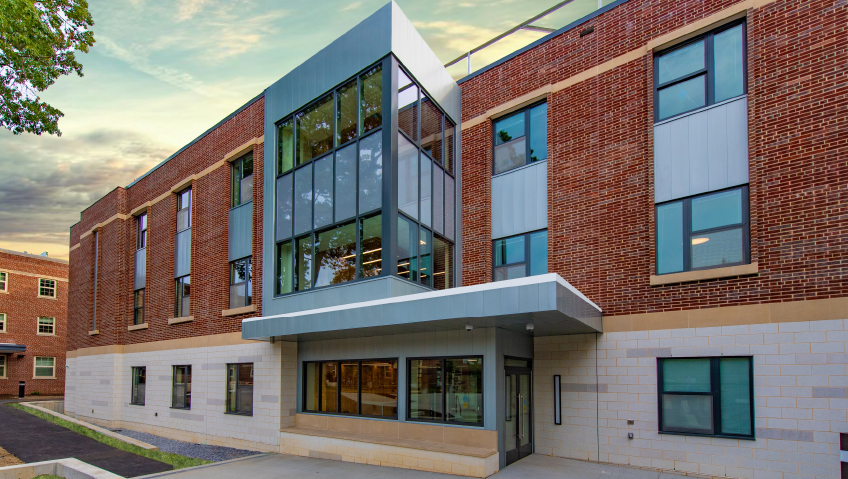Practically every county in the U.S. has a heritage building. In fact, we probably drive by one or more regularly without giving it much thought. But, in many ways, these historic buildings and sites help knit together local history and culture.
Heritage buildings are windows to understanding our past and providing a sense of permanency even in uncertain times. Old buildings attract people – whether it’s through the warmth of the materials like oak flooring, old brick or marble, or the doings of other people in other ages, older buildings are interesting.
According to the U.S. Department of the Interior, there are currently 96,000 properties listed on the National Register of Historic Places, which includes buildings, sites, structures, and districts.
But just because a building has been around for a long time, doesn’t mean that it’s a shoo-in to be designated a historic building. It has to be evaluated and meet standards such as the property’s significance with respect to architecture and the period in which it was built as well as its integrity and the actual age of the building.
These can include a wide array of structures, from the Cape Creek Bridge in Oregon to the McPherson Opera House in Kansas or even the Lindholm Oil Company Service Station in Minnesota.
In addition to national recognition, one of the highest honours a site can receive is the United Nations’ UNESCO World Heritage site designation. UNESCO stands for the United Nations Educational, Scientific and Cultural Organization and its mandate is to promote cultural heritage and the dignity of cultures. One important way of doing this is through recognizing and preserving sites around the world, including 1,073 sites in 167 countries.
However, with this special designation, there also comes a responsibility to maintain the fundamental elements that make the site special. There have been cases where sites have actually been delisted.
CNBC news covered the story of Dubrovnik, Croatia’s walled Old Town, which was successfully restored after the Croatian War of Independence in the 1990s. It was recently included in a danger list of UNESCO sites because of its starring role as King’s Landing in the epic HBO TV series, Game of Thrones. The site was so popular that cruise ships regularly descended on the small town of 42,000, bringing hordes of tourists. After being put on the danger list, Croatia took action to cap the number of both cruise ships and tourists in 2019.
Clearly one of the biggest benefits that comes from heritage buildings is the draw for tourists, who come to appreciate the historic and cultural significance. And of course, more visitors mean more business for local economies. But as in the case of Dubrovnik, some of these sites can be victims of their own fame, so there is a need to preserve the sites and structures themselves and to manage how people treat the heritage sites.
Not only do these buildings bring in tourists and help local businesses, they increase the value of local real estate as well. As Rethinking the Future reports on world architecture, the attraction and value of heritage buildings can be subdivided into two distinct effects: “On one hand, some of these do attract visitors due to architectural value, architectonic elements, and style or character of the building itself. Others, however, enhance the historic value of the city.”
Forbes also notes that studies have documented the benefits that heritage buildings and historic districts can have on property values. Quoting American economist Donovan D. Rypkema, “The results of these studies are remarkably consistent: property values in local historic districts appreciate significantly faster than the market as a whole in the vast majority of cases, and they appreciate at rates equivalent to the market in the worst case. Simply put – historic districts enhance property values.” For the construction industry, there’s a very practical case to be made for the pains and costs of restoring old buildings and giving them new life.
Beyond the cultural and historic – and economic! – reasons for preservation, there are also green ones. You could say that preserving buildings is actually recycling on a much larger scale. Repairing and reusing existing buildings uses energy and resources more efficiently, and reduces waste, including the wasteful process of demolition where so much material ends up in landfill.
As the requirements of sustainable development intensify, communities have a lot to gain from adapting and reusing old buildings. Consider an aging office building that becomes a vibrant retail facility, an abandoned factory that’s transformed into an apartment complex or a church that is revamped as a condominium. These adaptive-reuse projects can invigorate a community by repurposing existing, accepted – and often well-loved – buildings to meet the changing needs of the population.
But, as you may know, it’s not all roses when it comes to official heritage buildings. Many developers feel hampered in what they can do with these buildings because of the restrictions that come with the designation. The buildings themselves may also present financial and engineering challenges that come with their aging structures. When it comes to keeping heritage buildings viable, different paths may be followed.
One way is conservation, which includes the study of a place to ensure that it maintains its holistic architectural aesthetic as well as its cultural importance.
Preservation is another approach used to maintain the building, which focuses on the building’s current environment and slowing down the rate of deterioration.
For instance, in the heart of Harlem in New York City at 253 West 125th Street stands the Apollo Theater, where, for over a century, performers have come to wow audiences, and which has launched many a famous career.
By 1991, though, the theater was nearly bankrupt and deteriorating. It was taken over by the Apollo Theater foundation which fundraised for the building while focusing on preserving the building’s brilliant Jazz Age façade.
Traditional Building magazine captured the phased approach to preserving the marquee, including undoing defacements from sidewalk to parapet. “Upon close examination, the restorers found that the façade’s upper stories were held together mainly by inertia,” writes Eve M. Kahn in her February 2020 article, The Restoration of Harlem’s Apollo Theater. She goes on to add, “On salvageable but chipped or unglazed areas, Polonia Architectural Restoration, with advice from Integrated Conservation Resources, applied Keim and Edison Coatings products to reinstitute original finishes in combed, stippled textures and 18 shades of gray.”
The result is that the site is not just a cultural event center; it is also a cultural education destination, with groups from children to seniors visiting to learn more about the rich history of performances.
There is also restoration, which incorporates the actual materials and textures of a site into the process to minimize the use of foreign materials and retain the original integrity of the building.
Take the tower of Independence Hall in Philadelphia, for example. Beginning in 2010, the tower underwent a 14-month rehabilitation project funded under the American Recovery and Reinvestment Act. Restoration work covered the tower in scaffolding as work went ahead replacing the damaged wood, nails, and bricks. “Workers repointed and replaced damaged brick masonry, and restored and painted window sashes, frames, and doors,” according to the National Park Service, at https://www.nps.gov/inde/learn/historyculture/preservation-indehalltowerrehabilitation.htm. “Carpentry repairs included painting and caulking on all exposed wood decorative elements over the full height of the tower. This project also required reinforcing the new clock faces, bracing all building elevations, refurbishing the historic urns, and replacing the supporting weathervane structures.”
And then there is reconstruction, where foreign materials are incorporated in the reconstruction work to strengthen the building, as well as potentially reshaping the structure.
While it may not be the norm, sometimes architects will build on top of an original foundation. In Toronto, the historic Royal Ontario Museum was transformed by the addition of a very modern structure of interlocking prismatic glass. The result is a stunning atrium that combines the previously static and separated sections of nature and culture into a unified atrium with enticing opportunities to view the current exhibits.
While there’s no doubt that there are a lot of added complexities that come with heritage buildings – and the approach to their upkeep is definitely not one-size-fits-all – these buildings do bring more people to visit towns and neighbourhoods, boosting the local economy and community pride.






